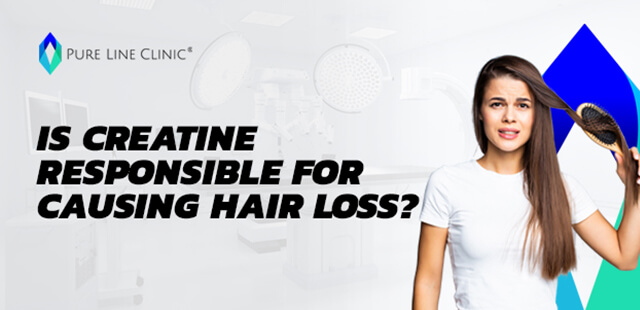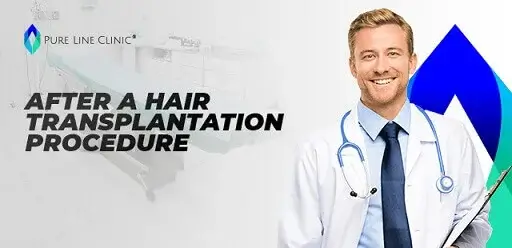
Alopecia Risk Factors and What to do Them
Alopecia, which usually occurs due to high stress, is seen in round shedding in the hair. It can rarely occur due to chronic diseases or thyroid problems. Alopecia can be seen in people who experience intense stress outside of the stress of daily life. Alopecia can be seen in people who experience intense stress outside of the stress of daily life. Depending on the condition of alopecia, treatment methods may also vary.
What is the Alopecia?
Alopecia is the temporary loss of hair or body hair. It is a common autoimmune disease that often causes unpredictable hair loss. During the alopecia process, hair production stops and hair begins to fall out. Hair loss is the main symptom of alopecia, but it can also cause loss of eyebrows, eyelashes, beard or body hair, redness of nails, breakage, and deformities. Although there is no definitive cure yet, there are treatments and cosmetic solutions for hair loss and eyebrows that can help hair grow faster and prevent further hair loss.
What Causes Alopecia?
Alopecia is an autoimmune event. In autoimmune disorders, the immune system qualifies healthy body cells as foreign invaders and produces antibodies against these structures. Alopecia is a disease caused by the immune system's misinterpretation of hair follicles in this way. Hair follicles are structures that allow hair to grow. Affecting these structures results in hair loss by stopping hair growth.
It is not clear at the moment what the main factor triggering this underlying cause of alopecia is. Alopecia is generally detected more frequently in individuals with a family history of thyroid gland disease and other autoimmune diseases such as diabetes.
What are the Symptoms of Alopecia?
Among the symptoms of alopecia, the most obvious is patchy hair loss. This shedding usually starts on the scalp and is about the size of a coin. Apart from the scalp, the onset of alopecia can also occur in the beard and eyebrow area. Hair loss develops quite suddenly and the time of occurrence can vary between 5 days and 5 weeks.
In addition to hair loss, some people may experience itching and burning in the affected area. In this condition, the hair follicles are not destroyed. Alopecia is not infectious. It is never transmitted from person to person or from one part to another. Although alopecia looks different from the usual spills or looks like fungal spills, alopecia is not contagious.
What to Do About Alopecia?
With various medical interventions to be made within the scope of alopecia treatment, hair loss can be reduced and the shed hair can grow faster. Alopecia is a very complex disorder in terms of the healing process. In some people, many treatment methods can be tried to determine which application is more effective. In severe cases, hair loss may worsen despite various medical interventions.
Although alopecia is not a serious health problem, it is a problem that can cause unhappiness and anxiety about appearance in people. If you detect signs and symptoms of this ailment in your body, it is recommended to get support from specialist physicians.
Treatment Methods That Can Be Applied for Alopecia?
Patients in the early stages of the disease do not need treatment, their hair grows back without doing anything. Although they cannot change the course of the disease, some treatments can increase hair growth. While the disease itself does not adversely affect physical health, treatments that carry serious risks should be avoided.
There is no known cure for alopecia, but there are treatment options that can slow hair loss or help hair grow faster. It may be necessary to try a variety of methods until you find one that works. Sometimes, if the wrong treatment is applied, hair loss may worsen. We can list the known treatment methods for alopecia as follows:
Steroid creams and scalp applications: Apply to bald areas for a limited time, usually twice a day.
Local steroid injections: It is applied on the scalp and eyebrows and is the most effective treatment approach for small patches of hair loss. Injections can be repeated every few months. A small depression may develop at the edge of the injection site, but this usually heals after a few months.
Steroid tablets: High doses of steroid tablets can regrow hair, but alopecia often recurs when treatment is stopped. When oral steroid intake exceeds a certain period, it can cause serious side effects, including weight gain, increased blood pressure, diabetes, stomach ulcers, cataracts, and osteoporosis.
Ultraviolet light therapy: The skin is sensitized to light with a tablet taken or cream applied here. Next, the bald areas are exposed to ultraviolet light two or three times a week for several months. There is a possibility of recurrence of alopecia when treatment is discontinued. In addition, this treatment may have a long-term risk of causing skin cancer.

Side Effects of Hair Transplantation
The Pure Line Clinic ® says that hair transplants are generally safe when a qualified, experienced medical team performs them. However, even with successful hair transplants, some side effects can happen.

How Much Does Hair Transplant Cost in Turkey?
Have you been looking to have a hair transplant for a while and you think how much it will cost in Turkey? In this article, we are talking about hair transplant costs in Turkey.

FUE vs FUT, Which is Better Hair Transplant Method ?
FUE Hair Transplant method, which has increased its popularity recently, is the most used hair transplant method in Turkey. Both methods have different advantages.

Are You Looking For Free Hair Transplant Consultation Near You?
In the changing world conditions, there is no need for the clinic to be nearby for a hair transplant consultation.Pure Line Clinic ® provides this process remote for you free of charge.

Acne After Hair Tranplantation Causes,Prevention and Treatment
Discover the causes, prevention, and treatment of acne after hair transplantation in our informative guide. Learn from Pure Line Clinic ® experts about managing post-transplant acne effectively and promoting successful hair growth.

African American Hair Transplant
How to get natural hair transplant results for African Americans by addressing unique hair characteristics, the benefits of FUE, and Pure Line Clinic’s specialists who are experts in customized plans to restore density and confidence.

Is Hair Transplant Safe?
In general, a hair transplant is a safe surgery, however like with any surgical process, there is always a tiny risk of: bleeding. infection. a hypersensitivity to the anesthetic.

Does Finasteride Regrow Hair ?
Finasteride can be used to regrow hair and has been found in clinical trials to be useful in enhancing hair growth. According to one study, 66% of males saw an increase in hair growth after taking Finasteride for two years.

Is Hair Transplant Permanent?
A hair transplant produces clearly long-lasting, permanent outcomes.There are some situations that need attention.

Is Creatine Responsible for Causing Hair Loss ?
Creatine is utilized in hair strengthening treatments. But, does taking creatine make you lose your hair?

Hair Transplant for Women
Ladies can also go through hair transplantation at the Pure Line Clinic ®. It is usually possible to have a hair transplant without shaving.

What is the Microscope Method for Hair Transplant ?
Hair transplants can perform in many different methods. The microscope method means analysing the most productive and healthy hair grafts under a microscope before a hair transplant and planning the operation accordingly.

How Can I Find Best Hair Transplant in Turkey?
We are aware of how difficult it is to find the best hair transplant clinic in Turkey. To make this selection easier, let’s talk about the Pure Line Clinic ® difference.

After a Hair Transplantation Procedure
Patients need to pay attention to many issues to get the best result in the post-hair transplant process.

Can You Wear a Hat After Hair Transplant?
Most of specialists will advise you to hold off wearing a hat or cap for at least ten days. Your transplanted grafts must root in the balding areas for 7–10 days.